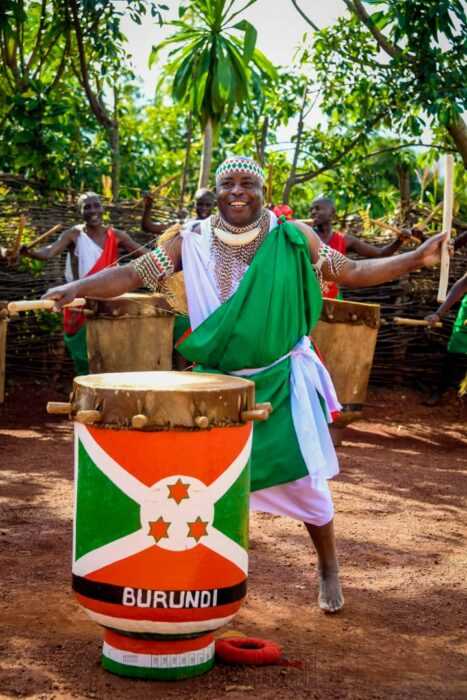Burundian drums, often called "ingomaare traditional percussion instruments that play a central role in Burundian culture. Their importance goes far beyond simple music; they are symbols of unity, national identity and the link with ancestors. Used in royal ceremonies, traditional rituals and national events, drums are considered sacred and are intimately linked to Burundi's history and traditions.
Origin and history of Burundian drums
Royal Roots
Burundian drums have their origins in royal traditions. In the past, they were used exclusively in royal courts for important ceremonies such as coronations, royal funerals and other state events. Drums symbolized the strength and authority of the king, and their beat was thought to represent the heartbeat of the nation.
Ritual Dance on the Royal Drum
Inscribed on UNESCO's Representative List of the Intangible Cultural Heritage of Humanity in 2014, the ritual royal drum dance is a performance that combines drum music with traditional dances, songs and heroic poetry. Performed by specially trained drummers, this dance is a fundamental element of Burundian identity. The drums are arranged in a semicircle around a central drum and are beaten synchronously to create a powerful sonic harmony.
Meaning Symbolic
Symbol of Power and Unity
Burundian drums are more than just musical instruments; they embody power, unity and national identity. Historically, the king used drums to communicate with his subjects and assert his authority. Each beat represented the vitality and cohesion of the kingdom. Drums were also used to invoke the spirits of ancestors and drive away evil spirits, giving them an important spiritual dimension.
Transmission of Values and Knowledge
The skills involved in making and using drums are passed down from generation to generation. Young drummers learn not only how to play the instrument, but also the values it embodies: respect for ancestors, the importance of community, and the responsibility of preserving this tradition. This transmission is essential to keep Burundian culture alive!
Advantages and disadvantages of drum preservation
Benefits
- Cultural preservation Drums are a mainstay of Burundian culture, and their preservation maintains a strong link with the country's history and traditions.
- Social cohesion Drumming ceremonies bring communities together, strengthening social ties and national identity.
- International recognition The inscription of Burundian drums on UNESCO's World Heritage List has drawn attention to Burundi's cultural wealth, providing an opportunity to promote the country on the international stage.
Conclusion
Burundian drums are much more than musical instruments; they are the beating heart of Burundian identity. Symbols of power, unity and spirituality, they continue to play a crucial role in the country's cultural life. However, preserving them in an ever-changing world presents challenges that require a delicate balance between tradition and modernity.


There are no reviews yet. Be the first one to write one.